Text
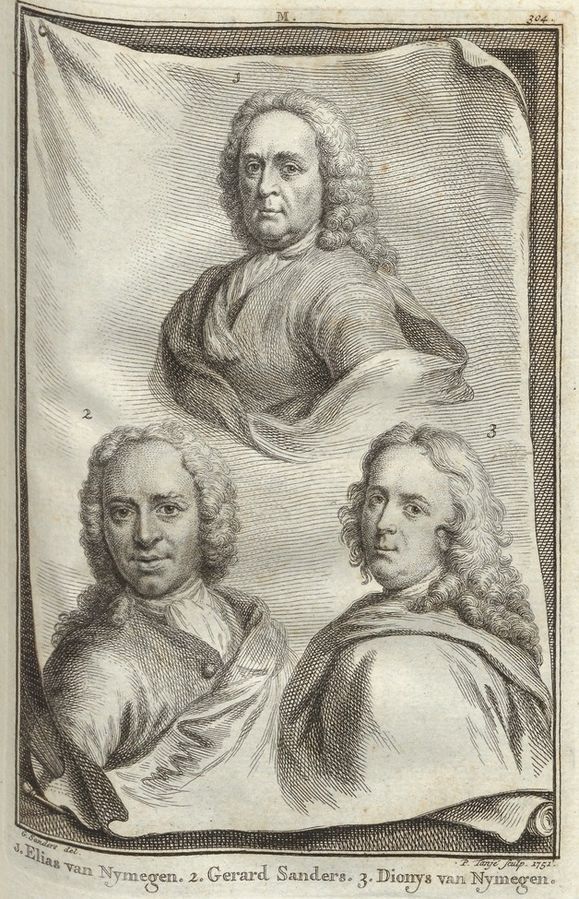
Portrait of Elias, above the engraved portraits of his pupils who were his nephew Gerard Sanders (left) and his son Dionys (right). Illustration from Jan van Gool's Nieuwe Schouburg, 1751.
Elias van Nijmegen (1667, Nijmegen – January 24, 1755, Rotterdam), was an 18th-century painter from the Northern Netherlands.
According to the RKD he became a member of the Leiden Guild of St. Luke in 1689, but he moved to Rotterdam where he married in 1701 and became a member of the guild there the next year in 1702. He is known for ceiling and wall decorations and was the teacher of the Rotterdam painters Gerard Sanders (his nephew by marriage of his brother Tobias to the widow Sanders) and his son Dionys. His daughter Barbara also became a painter.
6 notes
·
View notes
Photo
Cloelia (Ancient Greek: Κλοιλία) was a legendary woman from the early history of ancient Rome.
She was one of the women taken hostage by Lars Porsena as a part of the peace treaty which ended the war between Rome and Clusium in 508 BC. Ancient historians present two different stories explaining her escape. The first version of Cloelia's escape recognizes that the female hostages went to the river to bathe. Having persuaded their guards to leave them alone at the river, in order to remain modest, they swam across the river into Roman territory. The second version claims that Cloelia escaped from the Etruscan camp, leading away a group of Roman virgins. According to Valerius Maximus, she fled upon a horse, and swam across the river Tiber through a barrage of hostile darts, thus bringing her band of girls to safety.
Elias van Nijmegen (1667, Nijmegen – January 24, 1755, Rotterdam), was an 18th-century painter from the Northern Netherlands.
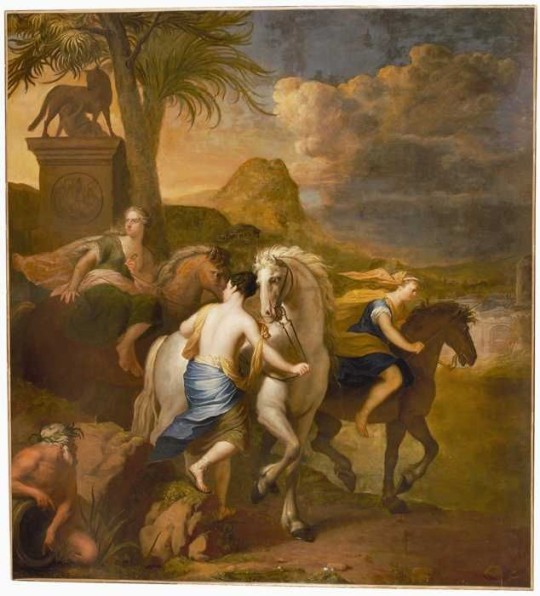
Elias van Nijmegen, 1667-1755
Cloelia on de Tiber, ca.1730/50, oil on canvas, 319x262 cm
Museum Rotterdam, Inv. 11225
34 notes
·
View notes
Photo
Elias van Nijmegen (1667, Nijmegen – January 24, 1755, Rotterdam), was an 18th-century painter from the Northern Netherlands.

Elias van Nijmegen - Perseus frees Andromeda, 1677-1755.
14 notes
·
View notes
Photo
Elias van Nijmegen (1667, Nijmegen – January 24, 1755, Rotterdam), was an 18th-century painter from the Northern Netherlands.

Botanical studies of Marigolds (Netherlands, 1677 - 1755) by Elias van Nijmegen.
Watercolour and pencil.
Rijksmuseum.
Wikimedia.
270 notes
·
View notes
Photo
Elias van Nijmegen (1667, Nijmegen – January 24, 1755, Rotterdam), was an 18th-century painter from the Northern Netherlands.

Elias van Nijmegen
Studies of Four Tulips, c. 1700 - c. 1725
714 notes
·
View notes
Photo
Dionys van Nijmegen (1705 – 1798), was an 18th-century painter from the Northern Netherlands.

Portrait of Hugo du Bois, Director of the Rotterdam Chamber of the Dutch East India Company, elected 1734 by Dionys van Nijmegen, Museum of the Netherlands
Portret van Hugo du Bois, gekozen in 1734. Buste in ovaal naar rechts. Onderdeel van een reeks portretten van de bewindhebbers van de Rotterdamse Kamer van de Verenigde Oost-Indische Compagnie, vervaardigd voor het Nieuw Oost-Indisch Huis uit 1698 aan de Boompjes te Rotterdam.
https://www.rijksmuseum.nl/nl/collectie/SK-A-4523
16 notes
·
View notes
Photo
Dionys van Nijmegen (1705 – 1798), was an 18th-century painter from the Northern Netherlands.
He was born in Rotterdam as the son of Elias van Nijmegen. He was a pupil of his father and Jacob de Wit and became a member of the Rotterdam Guild of St. Luke in 1743. He is known for portraits, wall and ceiling decorations. He was the father and teacher of Gerard van Nijmegen. He died in Rotterdam.

Portrait of Adriaan van der Vliet, Poet in Rotterdam by Dionys van Nijmegen, Museum of the Netherlands
Portret van Adriaan van der Vliet. Dichter te Rotterdam. Ten halven lijve in ovaal, wijzend met de linkerhand op een blad papier. Onderdeel van een verzameling portretten van Nederlandse dichters.
https://www.rijksmuseum.nl/nl/collectie/SK-A-4624
8 notes
·
View notes
Photo
Dionys van Nijmegen (1705 – 1798), was an 18th-century painter from the Northern Netherlands.
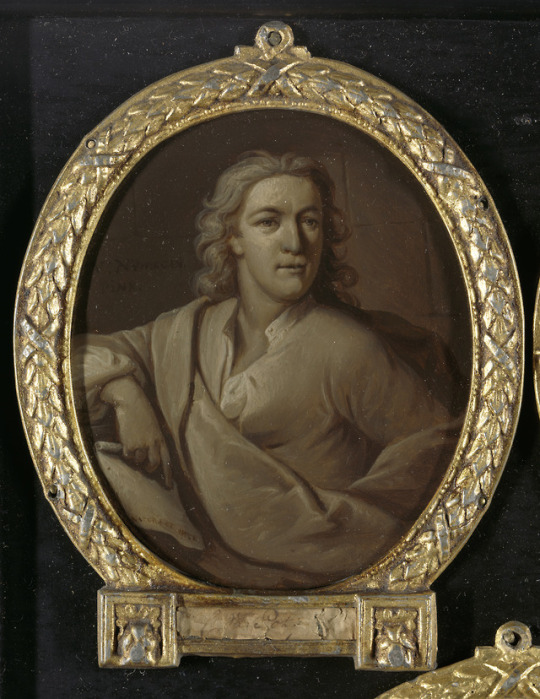
Portrait of Cornelis van der Pot, Merchant and Poet in Rotterdam by Dionys van Nijmegen, Museum of the Netherlands
Portret van Cornelis van der Pot. Koopman en dichter te Rotterdam. Buste in ovaal, het hoofd naar rechts gekeerd, een papier in de rechterhand. Onderdeel van een verzameling portretten van Nederlandse dichters.
https://www.rijksmuseum.nl/nl/collectie/SK-A-4622
20 notes
·
View notes
Photo
Dionys van Nijmegen (1705 – 1798), was an 18th-century painter from the Northern Netherlands.

Portrait of Adriaen Paets, Director of the Rotterdam Chamber of the Dutch East India Company, elected 1734 by Dionys van Nijmegen, Museum of the Netherlands
Portret van Adriaen Paets (1697-1765), gekozen in 1734. Buste in ovaal naar rechts. Onderdeel van een reeks portretten van de bewindhebbers van de Rotterdamse Kamer van de Verenigde Oost-Indische Compagnie, vervaardigd voor het Nieuw Oost-Indisch Huis uit 1698 aan de Boompjes te Rotterdam.
15 notes
·
View notes
Photo
Dionys van Nijmegen (1705 – 1798), was an 18th-century painter from the Northern Netherlands.

Portrait of Sara Stiermans, the Artist’s Wife by Dionys van Nijmegen, Museum of the Netherlands
Portret van Sara Stiermans (1704-17570, de echtgenote van de schilder. Buste in ovaal naar links. Pendant van SK-A-1933.
13 notes
·
View notes
Photo
Dionys van Nijmegen (1705 – 1798), was an 18th-century painter from the Northern Netherlands.

Portrait of Frans de Haes, Poet and Linguist in Rotterdam by Dionys van Nijmegen, Museum of the Netherlands
Portret van Frans de Haes (1708-61). Dichter en taalgeleerde te Rotterdam. Ten halven lijve, in ovaal. Onder de rechterarm een lier, de rechterhand onder de kin. Onderdeel van een verzameling portretten van Nederlandse dichters.
12 notes
·
View notes
Photo
Dionys van Nijmegen (1705 – 1798), was an 18th-century painter from the Northern Netherlands.
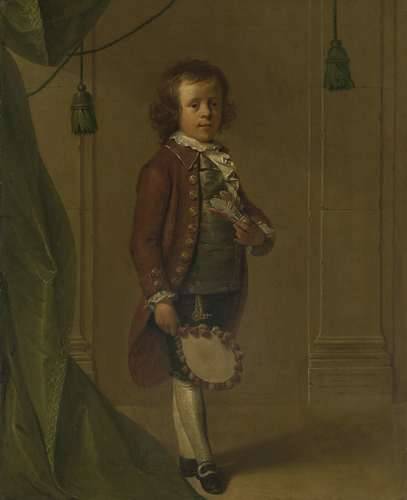
Portrait of Dionys Eliasz van Nijmegen, 1790, Museum of the Netherlands
Rotterdam painter Dionys van Nijmegen was 86 when he portrayed his 11-year-old grandson, as he noted on the base of the pilaster. Judging from the fine detailing of the sitter’s clothing, the aged painter’s eyesight was still excellent. The boy holds a racket and a shuttlecock. He grew up to become a physician.
http://hdl.handle.net/10934/RM0001.COLLECT.4755
10 notes
·
View notes
Photo
Dionys van Nijmegen (1705 – 1798), was an 18th-century painter from the Northern Netherlands.
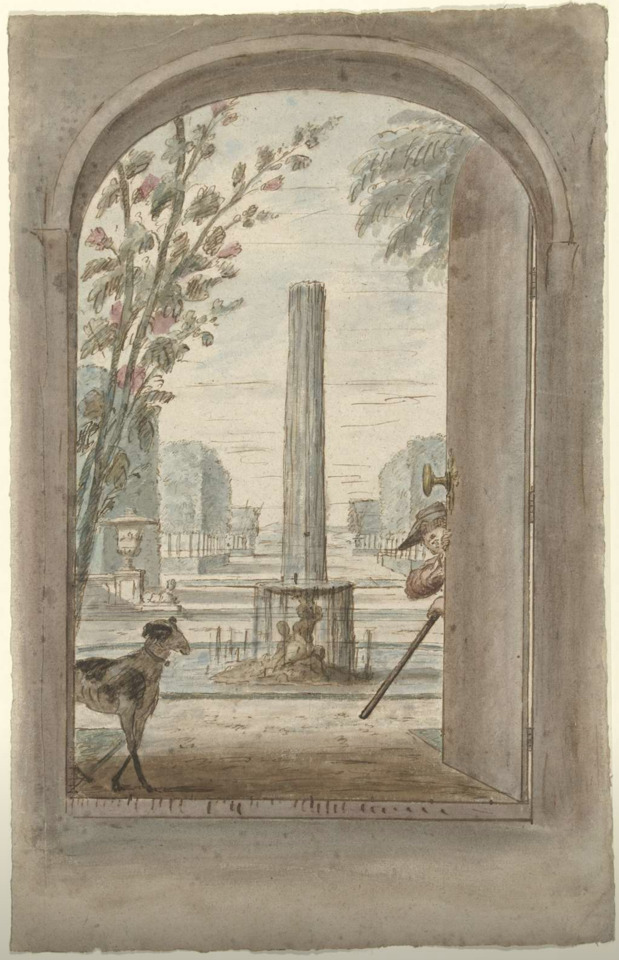
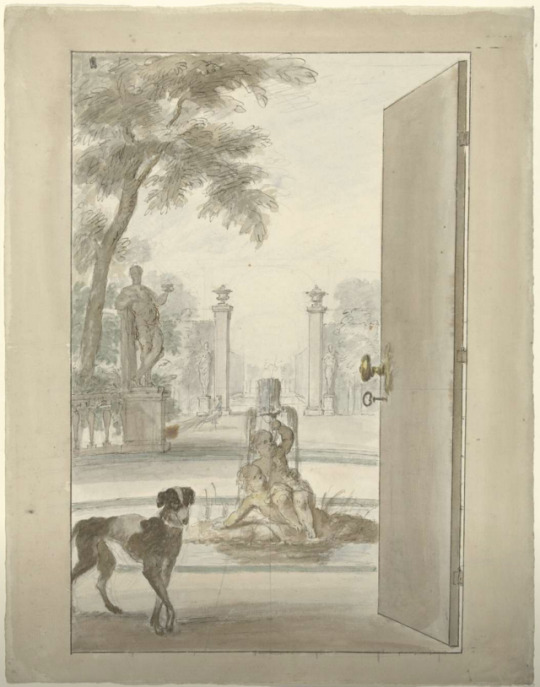
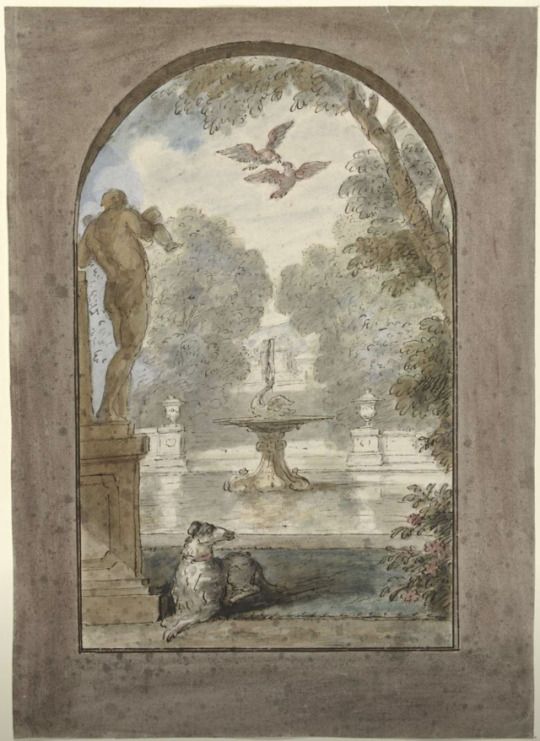
Dionys van Nijmegen 1715 - 1798
Drawing for an interior mural (decorative sequence) with a trompe-l'œil scenes
Rijksmuseum
83 notes
·
View notes
Text

Jacques-Albert Senave - Le Marché de la Vallée, vers 1815 - 1815
Jacques-Albert Senave (1758–1823) was a Flemish painter mainly active in Paris during the late 18th and early 19th centuries. He is known for his genre scenes, history paintings, landscapes, city views, market scenes and portraits.
Senave is known for his genre scenes, history paintings, landscapes, city views, market scenes, portraits and some still lifes. His genre paintings were strongly influenced by seventeenth century Flemish and Dutch genre scenes. These are particularly reminiscent of David Teniers the Younger's tavern and festival scenes. He excelled especially in anecdotal representations of daily life, market scenes, village views.
Senave painted two versions of a work entitled Parody of Zeuxis (Royal Museums of Fine Arts of Belgium, Brussels and City Museum of Ypres) which are a parody on a legend about the Greek painter Zeuxis who flourished during the 5th century BCE. The story as recounted by Cicero states that Zeuxis received a commission to paint a portrait of Helen of Troy for the Temple of Jupiter at Crotona. To realise the commission Zeuxis set out to find the most perfect characteristics from five of the greatest beauties of the city. In Senave's painting in the Royal Museums of Fine Arts of Belgium, the artist is shown sitting in a cavernous space with a large canvas in front of him while he is inspecting prospective models in various states of undress. An old lady behind the models looks like a procuress, which suggests that in fact the models are prostitutes and the room is a brothel. This impression is further bolstered by the pair of lovers huddled furtively on the right side. Some suspicious figures are gathered in the shadow on the far left, one of whom is holding a painting. Art historian Elizabeth Mansfield has described the dog standing in front of Zeuxis as misshapen and a likely product of the same method of selecting and combining traits of dogs as Zeuxis intended to use with his models. The method clearly did not produce an example of ideal beauty. Mansfield writes that the painting "humorously exposes the circuit of aesthetic-erotic-commercial traffic embedded within the Zeuxis myth".
Senave painted religiously themed works such as the Seven Works of Mercy created for the Saint Peter's church in his hometown Lo. He only painted a few portraits. An example is the Portrait of a 48-year old gentleman (Sotheby's Amsterdam 5 May 2009, lot 101). It shows the unidentified sitter seated in his study with his right arm resting on a book on a small table. The book tells something about the sitter's beliefs: it is didactic poem, Altaergeheimnissen (Dutch for 'Secrets of the Altar') first published 1645 in which the Catholic convert Joost van den Vondel expounded the doctrine of the Eucharist.
13 notes
·
View notes
Text

Jacques-Albert Senave - Paris, a view of the Seine with the bridge of Louis XVI - 1791
Jacques-Albert Senave (1758–1823) was a Flemish painter mainly active in Paris during the late 18th and early 19th centuries. He is known for his genre scenes, history paintings, landscapes, city views, market scenes and portraits.
7 notes
·
View notes
Text

Jacques-Albert Senave - Market day - 1818
Jacques-Albert Senave (1758–1823) was a Flemish painter mainly active in Paris during the late 18th and early 19th centuries. He is known for his genre scenes, history paintings, landscapes, city views, market scenes and portraits.
33 notes
·
View notes
Text
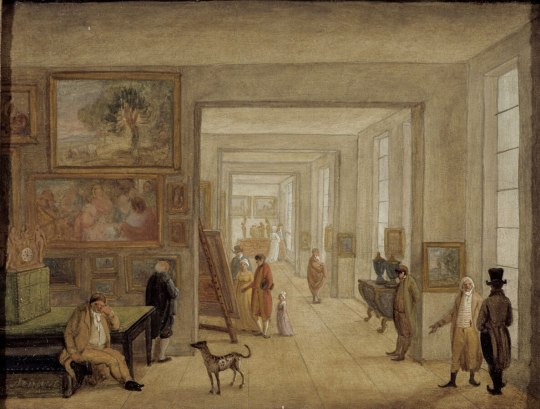
Jacques-Albert Senave - Sales rooms at the Elysée Palace in Paris in 1797 - 1797
The Élysée Palace (French: Palais de l'Élysée) is the official residence of the President of the French Republic. Completed in 1722, it was built for nobleman and army officer Louis Henri de La Tour d'Auvergne, who had been appointed Governor of Île-de-France in 1719. It is located on the Rue du Faubourg Saint-Honoré near the Champs-Élysées in the 8th arrondissement of Paris, the name Élysée deriving from the Elysian Fields, the place of the blessed dead in Greek mythology. Important foreign visitors are hosted at the nearby Hôtel de Marigny, a palatial residence.
The palace has been the home of personalities such as Madame de Pompadour (1721–1764), Nicolas Beaujon (1718–1786), Bathilde d'Orléans (1750–1822), Joachim Murat (1767–1815), and Charles Ferdinand, Duke of Berry (1778–1820). On 12 December 1848 under the Second Republic the French Parliament passed a law declaring the building the official residence of the President of France. The Élysée Palace, which contains the presidential office and residency, is also the meeting place of the Council of Ministers, the weekly meeting of the Government of France presided over by the President of the Republic.
Jacques-Albert Senave (1758–1823) was a Flemish painter mainly active in Paris during the late 18th and early 19th centuries. He is known for his genre scenes, history paintings, landscapes, city views, market scenes and portraits.
14 notes
·
View notes